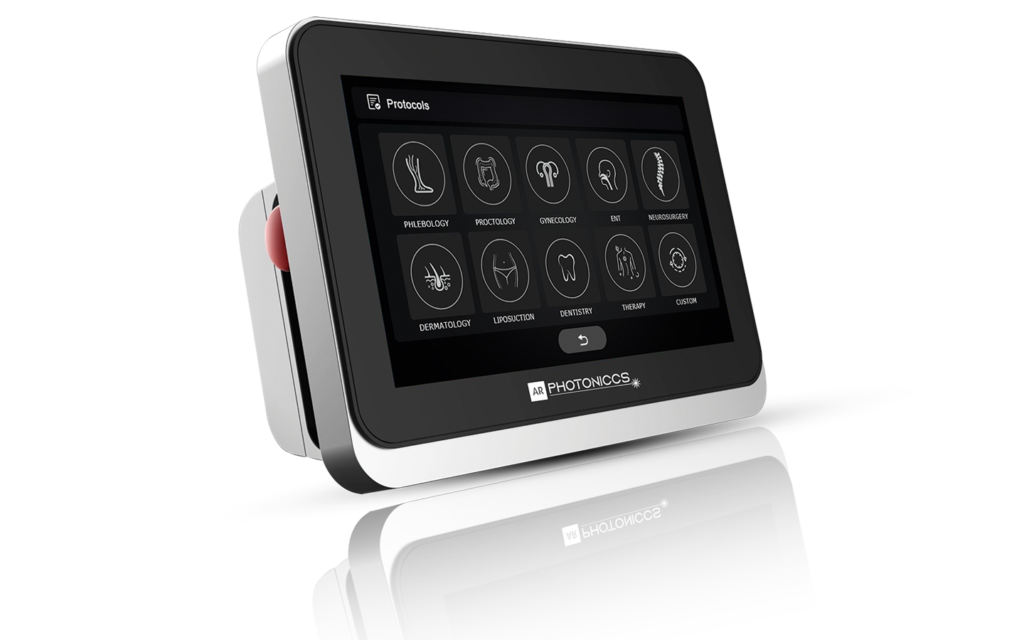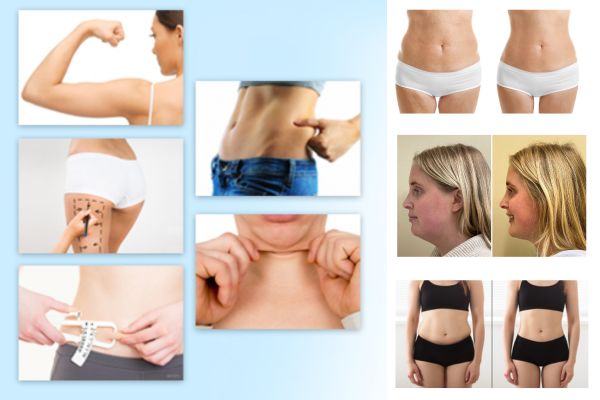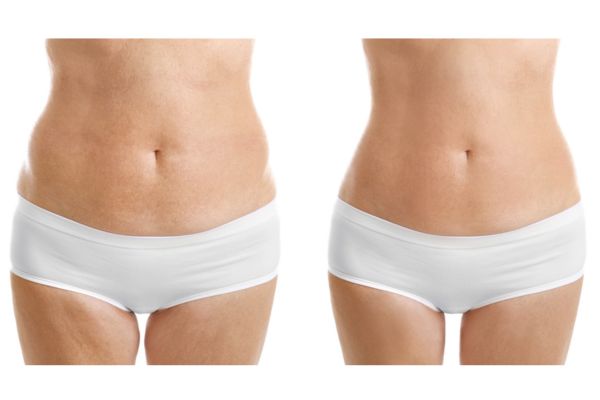Book Appoinment


Dual Wavelength in One Machine - 15w/1470nm + 635nm
A dual-wavelength laser machine with specifications "15W/1470nm + 635nm" typically refers to a medical laser system used for procedures that benefit from the combined effects of both wavelengths.
1470nm wavelength: This wavelength is often used in medical applications for procedures like varicose vein treatment, as it is well-absorbed by water and hemoglobin, making it effective for coagulating blood vessels.
635nm wavelength: This wavelength is in the red spectrum and is often used for superficial treatments, such as skin rejuvenation or superficial wound treatments.
The combination of these two wavelengths in a single machine allows for versatility in treating different conditions and depths within the tissue.
Several Benefits of Diode Laser
The Photoniccs 15W/1470 nm + 635 nm dual wavelength diode laser offers a high success rate for laser surgery procedures such as piles, fissure, fistula, and pilonidal sinus surgeries.
Due to its advanced technology and comprehensive surgical training, surgeries performed with the Photoniccs 15W/1470 nm + 635 nm dual wavelength diode laser have a very low recurrence rate.
The use of laser fibers allows for the precise delivery of energy, making treatments quick and successful.
The Photoniccs 15W/1470 nm + 635 nm dual wavelength diode laser requires only a small prick for treatments, making it minimally invasive.
Patients undergoing treatments with the Photoniccs 15W/1470 nm + 635 nm dual wavelength diode laser experience quick and complete recovery.
What makes Photoniccs unique compared to other devices?
Photoniccs is unique compared to other devices due to its advanced dual-wavelength technology (15W/1470 nm + 635 nm), which allows for precise and effective treatment of various medical conditions. It boasts a high success rate in surgeries such as piles, fissure, fistula, pilonidal sinus, varicose veins, liposuction, cosmetic gynecology such as vaginal rejuvenation, vaginal tightening, stress urinary incontinence, wound healing, pain management etc. with a low recurrence rate. The device is minimally invasive, requiring only a small prick for laser treatments, and enables quick recovery for patients. Its versatility extends to applications in varicose vein treatment, proctology, cosmetic gynecology, and wound healing procedures , making it a comprehensive and invaluable tool in medical practices.
Why Choose Photoniccs?
Dual Wavelengths:Offers a choice of two wavelengths (1470+635) for versatile treatment options.
Fiber Options :Provides three types of fibers - bare, radial, and conical - for precise and tailored treatments.
Cutting-Edge Technology: Incorporates advanced technology for effective and efficient procedures.
Predefined Therapy Protocols: Features an extendable database of therapy protocols that can be customized for individual patients.
Low Operating Costs: Ensures cost-effectiveness with the lowest operating costs.
Compact Size: Compact and small-sized devices for convenient use and storage.
Flexibility: Offers flexibility in development and other customized parameters for tailored treatments.
Laser Treatment for Proctology
Hemorrhoids / Piles
During laser treatment under local or general anesthesia, radial fiber delivers laser energy directly to hemorrhoidal nodes, obliterating them from the inside. This method helps preserve the mucosa and sphincter structure with extremely high precision. Laser energy is utilized to block the blood supply to the abnormal tissue, causing the destruction of the venous epithelium. This process results in the simultaneous shrinkage and obliteration of the hemorrhoidal pile. Compared to conventional surgery, the advantage of using laser lies in the fibrotic reconstruction, which generates new connective tissue, ensuring that the mucosa adheres to the underlying tissue and prevents the occurrence or recurrence of prolapse. The surgical procedure can be executed in only a few minutes.
Fistula
Under local or general anesthesia, a radial fiber delivers laser energy into the anal fistula tract, thermally ablating and closing off the abnormal pathway. This process induces the destruction of the fistula epithelium and simultaneous obliteration of the remaining fistula tract through a shrinkage effect. The controlled destruction of epithelialized tissue causes the fistula tract to collapse significantly, supporting and accelerating the healing process. Compared to conventional surgery, the advantage of using a diode laser with a radial fiber lies in the operator's good control and ability to use it in convoluted tracts. The surgical procedure can be completed in just a few minutes.
Fissure
The procedure for anal fissure treatment is performed under local anesthesia, eliminating the need for hospitalization. Using laser technology, the diseased tissue is vaporized, resulting in efficient removal of the fissure. Laser surgery for anal fissures boasts high success rates and is considered a cutting-edge, modern approach to treatment, offering a superior alternative to traditional methods.
Pilonidal Sinus
In contrast to traditional methods, laser treatment for pilonidal sinuses targets the condition deeply and effectively. It is a non-invasive procedure, ensuring a painless experience with therapeutic effects that significantly aid in the rapid healing of pilonidal cyst disease. The laser removes inflamed structures and sinuses precisely, typically completing the procedure in about 30 minutes. Laser treatment minimizes collateral damage, leading to a quicker and easier healing process with minimal pain. The risk of recurrence is low, and complete healing and restoration of the pilonidal cyst are achievable. Laser surgery stands out as a superior option compared to other surgical procedures for pilonidal sinuses.
Laser Treatment for Varicose Veins
Endovenous Laser Treatment (EVLT) is a highly effective procedure for treating varicose veins by causing their occlusion. The procedure involves inserting a fiber optic into a saphenous vein through a catheter, after which the laser is activated and slowly withdrawn. The laser's thermal effects heat the tissue, leading to the shrinking of vein walls through endothelial alteration and collagen contraction.
EVLT can be performed using either pulsed or continuous-wave laser operation. While pulsed operation involves step-by-step fiber withdrawal, continuous-wave laser operation, which involves continuous fiber withdrawal, is often preferred. This method provides more uniform vein illumination, minimizes tissue damage outside the vein, and typically yields superior results.
It's important to note that EVLT is just the beginning of the occlusion process. Following the treatment, the veins gradually shrink over several days or weeks. Long-term observations have shown very positive outcomes from this procedure.
Laser Treatment for Liposuction
Laser Technology
The 1470nm diode laser, alongside recent innovations, represents cutting-edge technology in Tumescent Liposuction. It enables targeted fat removal with minimal bleeding and bruising, requiring less effort from physicians and leading to faster patient recovery. This laser system operates at a wavelength of 1470nm, which effectively targets fat-water absorption. It also provides combined infiltration and suction capabilities. The device features an integrated cannula and fiber interface, allowing for simultaneous lasing and suction capabilities. The AR Photoniccs device is particularly advantageous for efficient fat emulsification and removal. The unique radial and bare emitting fiber of this device ensures a wider and more uniform distribution of heat, along with precise temperature control. This leads to improved skin tightening, reduced procedure time, increased fat viability for successful grafting, and superior clinical outcomes.
Optimal Wavelength
The AR Photoniccs laser device operates at the 1470nm wavelength, which effectively targets water in soft tissues. This wavelength offers a higher absorption rate of water and fat compared to other competing devices, allowing for optimized fat removal with minimal tissue damage. The device delivers laser energy at a low power density for maximum safety, reducing the risk of burns.
Liposuction Cannula
The liposuction cannula is designed to break up fatty tissue, making it easier to suction and remove from the body. Its precise and small oscillations allow surgeons to safely target specific areas without causing damage to surrounding tissue. This technique is particularly effective for treating areas with dense and fibrous adipose tissue. When used alongside simultaneous lasing and suction, the cannula enables surgeons to remove fat more efficiently and with reduced manual force. This leads to less bruising, a shorter recovery time, and a more comfortable experience for both the surgeon and the patient.
Before - After



Laser Treatment for Cosmetic Gynecology
Laser treatment for cosmetic gynecology, specifically Laser Vaginal Rejuvenation Treatment, utilizes an innovative technique that combines infrared laser action with a specialized handpiece to accelerate the production and remodeling of mucosa collagen. This treatment can lead to improvement of up to 70% from the first session. Age and muscular stress often cause atrophic changes in the vagina, resulting in symptoms such as dryness, sexual difficulties, itching, burning, tissue laxity, and urinary incontinence. These issues are primarily due to the loss of tone in the vaginal mucosa.
The laser treatment targets the vaginal mucosa using a wavelength of 1470nm combined with the controlled, radial emission of the laser handpiece. This combination has a bio-modulating effect that stimulates Neocollagenesis, regenerating the epithelium and connective tissue. This rejuvenates the mucosa by restoring firmness, flexibility, and hydration, significantly reducing symptoms typically associated with menopause. Additionally, the laser treatment can have a positive effect on urinary incontinence, often restoring normal function.
One of the main advantages of using a diode laser is its ability to penetrate deeper, targeting the mucosa without causing ablative thermal injury. The unique design of the handpiece and its circular emission make the treatment painless. Additionally, this combination ensures that the laser evenly targets all tissue on the inner walls of the vagina. The treatment software is user-friendly, with suggested settings, but surgeons can also manually adjust settings as needed. Additional handpieces are offered for treatments of the internal and external vulvar areas, as well as for aesthetic microsurgery.
Laser Vaginal Rejuvenation Treatment with One Solution
AR Photoniccs Laser offers a comprehensive solution for Laser Vaginal Rejuvenation Treatment, addressing a variety of feminine indications. It provides effective care for a diverse range of needs, including:
- Vaginal Tightening Stress
- Urinary Incontinence (SUI)
- Vaginal Dryness & Recurrent Infections
- Post - Menopause - GSM
- Post - Delivery Rehabilitation
Benefits of Laser Cosmetic Gynecology Treatment
- Increased Collagen
- Improver Muscle Tone
- Improved Sensation
- Reduced Vaginal Dryness
- Enhanced Orgasm
- Fully Outpatient Process without anesthesia
- No Side Effects
- Effective and Painless
- Non Invasive

Laser Treatment for PLDD
PLDD (Percutaneous Laser Disc Decompression) is a minimally invasive procedure used to manage radicular spine pain. It is performed under local anesthesia and involves inserting an optical fiber into a working cannula guided by fluoroscopy. Fluoroscopy, combined with a contrast medium, helps confirm the cannula's position and the condition of the disc bulge.
The laser is utilized to initiate decompression and reduce intradiscal pressure. By employing a posterior-lateral approach that avoids interference with the vertebral canal, PLDD minimizes the risk of damaging the dural sac when operating on higher segments or spinal roots.
It's important to note that PLDD is a reparative treatment and does not reinforce the annulus fibrosus. The laser decompression results in a small amount of the nucleus pulposus evaporating, leading to a minimal decrease in disc volume. Nevertheless, disc pressure can be notably decreased.
Main indications
- Degenerative disc disease
- Bulging disc
- Pinched nerve (nerve root compression)
- Sciatica
User-friendly software
The AR Photoniccs diode laser is a high-powered surgical laser, meticulously crafted in Canada. Every component in the unit is thoughtfully chosen and overseen by their internal R&D division. Featuring a high-definition touch screen with vibrant color quality and a wide field of view, the AR Photoniccs laser ensures ease of use for the operator. Personalized user settings can be saved on the device, enabling quick and effortless selection of treatment parameters.
Advantages of PLDD
- Day care procedure
- No general anaesthesia
- No arthrodesis (fusion)
- Minimally invasive
- Excellent patient outcomes
- Minimal recovery time
- Minimal scar tissue formation
Application of Laser
- Proctology
- Varicose Veins Liposuction
- Cosmetic Gynaecology
- Hysteroscopy
- Low Laser Therapy
- Tumor Ablation
- Wound Management
- Diabetic Foot
- General Surgery